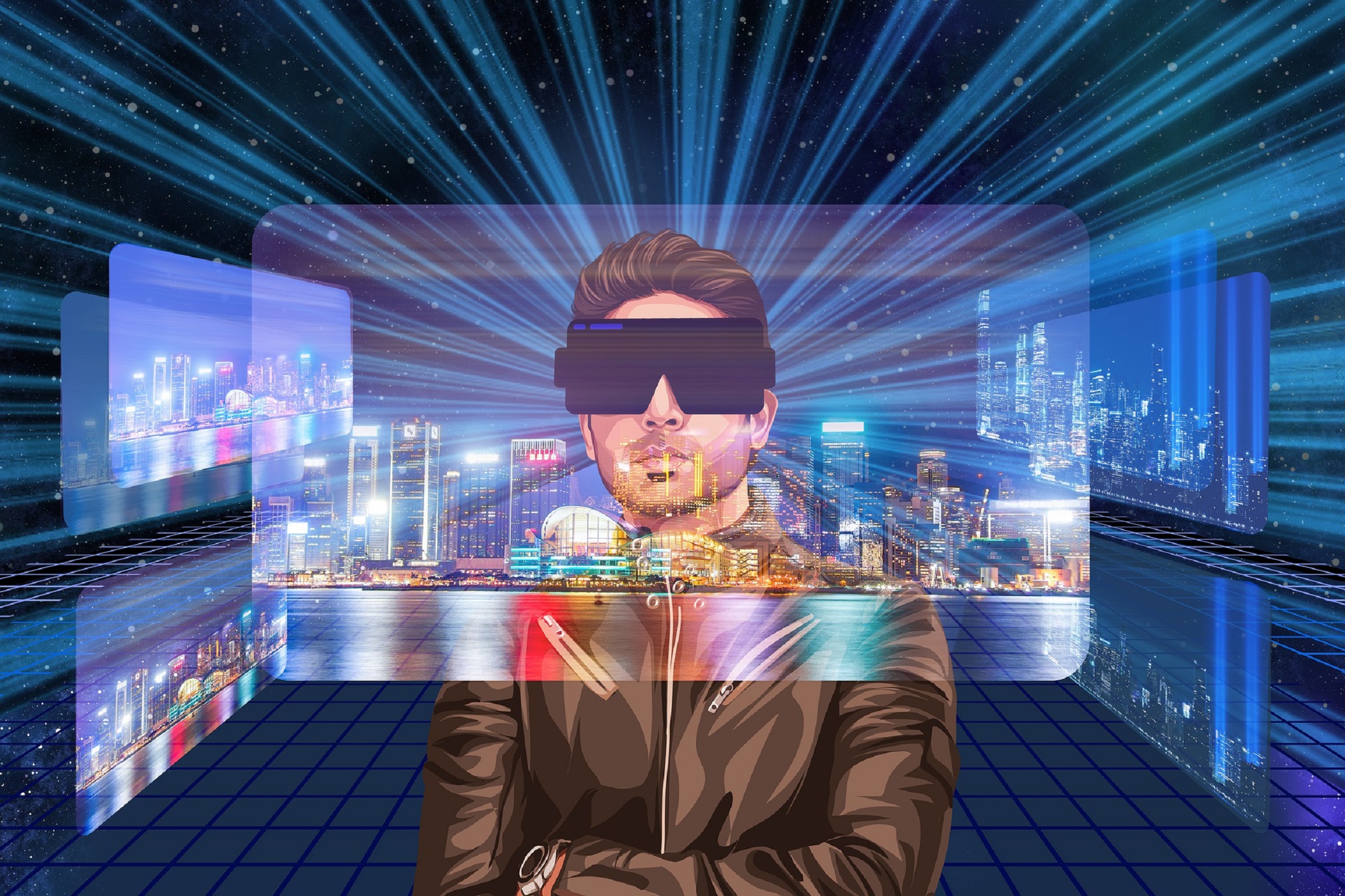Web3 and Gaming Tech: Evolution Over The Years

The world is changing, and communication, employment, as well as daily activities—including earning money and enjoying games—have all undergone significant shifts. Web 3 is a rapidly spreading technological innovation that makes use of the value-creating potential of Blockchain technology. A fresh wave of change is being sparked by this technology in numerous sectors.
Companies across industries are eager to adopt this technology, and one such area is gaming. As we are about to welcome the future with web3, web3 in gaming may be seen as the start of this journey.
Let’s examine how Web3 gaming has changed over the years and how it differs from the traditional games you are accustomed to.
What is web3?
Gavin Wood, an Ethereum co-founder, initially introduced the phrase “web3” in 2014, and it was then that the idea of web3 was first developed. Early internet versions had a limited potential and a lot depended on the internet. Wood thought that the web3 technology was a potent accelerator for the growth of the global tech ecosystem. Hence things took a different turn.
The decentralization of the internet is the main tenant of web 3. The fundamental reason for introducing this technology is to transfer control from middlemen to end users. An unparalleled level of security, transparency, and immutability is made possible by the fundamental infrastructure of web3 technology, which relies on blockchain, cryptocurrencies, and NFTs.
The distinctive qualities of Web3 show how it might disrupt several industries. Large enterprises are dipping their toes in to new wave for this reason. Let’s examine the many applications that the technology permits.
Web3 in gaming refers to a new way of playing games that emphasizes decentralization, ownership, and rewards. It’s the latest evolution of the internet, following Web1 and Web2. Web1 was focused on open-source and open standards, while Web2 was centered around user-generated content and social connections. In contrast, Web3 is all about value exchange and self-sovereignty, with a decentralized internet.
How is the gaming market growing?
The gaming industry is expanding quickly and has tremendous growth potential. For India’s gaming sector, Deloitte’s 2021 forecasts predict that the CAGR of revenue from online games will be 40{38557cf0372cd7f85c91e7e33cff125558f1277b36a8edbab0100de866181896}, or roughly 2.8 billion by 2022. One important pillar in a few blockchain-based protocols, like Tron, is the gaming industry. The decentralized blockchain-based protocol aims to give game developers the tools they need to make blockchain-based games and to give gamers everywhere the greatest possible gaming experience.
The gaming industry is booming as more people are getting hooked on play-to-earn gaming models. The integration of technology has dramatically changed the industry over time, and now the rise of web 3.0 is bringing a paradigm shift. The APAC gaming industry’s revenue is projected to reach over $174 billion by 2021, with a market worth of $72.2 billion in 2019. These figures are expected to continue growing as players shift their focus from video games to blockchain-based games.
Web 3.0 will revolutionize the gaming market by giving players the ability to earn money as they play. They will have the option to own, sell, and trade premium in-game assets, leading to a play-to-earn model instead of free-to-play. This change is already altering the dynamics of the industry, and the potential of web 3.0 has prompted many experts to invest in the progress of the gaming industry. In this article, we will explore how web 3.0 and blockchain-based gaming can transform the gaming industry.
Web3 offers several benefits:
Web 3 offers many benefits for gamers, that includes:
- Ownership Focus: Web3 prioritizes data ownership and gives players control over their online information. This translates to true ownership of in-game items, leading to a more secure gaming experience.
- Early Influencer Potential: Web3 and decentralized web technology offer exciting new opportunities for the gaming industry, allowing players to own their in-game assets and data, leading to a more open, transparent, and secure gaming ecosystem.
- Earning Opportunities: The gaming industry is growing rapidly as the world moves online, providing more chances for gamers to earn money through skin markets and other web-based economies.
- Diverse Gaming: The gaming industry is diverse, but games themselves often lack representation. Web3 technology offers the potential for a more inclusive gaming experience.
- Modification Freedom: Open-source games can be modified by anyone with coding skills, giving gamers the freedom to create their own game experiences beyond the content provided by developers.
Key Features of Web 3 in gaming:
Web3 gaming is revolutionizing the gaming world by offering players the opportunity to own, trade, and earn from in-game assets. The essence of web3 gaming is decentralization, which brings improved security and numerous benefits.
1. Proof-of-Ownership and Interoperability
Proof-of-ownership is a defining feature of web3 gaming, with the growing popularity of NFTs enabling true ownership and interoperability in gaming. Players can now fully own their in-game assets through NFTs and even transfer them outside of the gaming marketplace for profit.
2. Transparency in a Democratic Gaming World
Web3 gaming operates autonomously with minimal central authority, relying on voting consensus for changes in the gaming process. This has led to the rise of decentralized governance organizations (DAOs) and a more transparent gaming experience. Players are given more control, with no third-party involvement.
3. Player-Focused Gaming
Web3 gaming prioritizes putting power back in the hands of players and creating an environment tailored to their needs. The focus is on player experience, rather than just short-term profit.
Marketing Technology News: MarTech Interview with Nikki (Cassidy) Stone, Executive Vice President, Managing Director at Zenith
Technologies for web3 that are in use or being developed in the gaming sector
Understanding the following technologies, which serve as the foundation for web3 in gaming, is crucial:
1. Blockchain Technology:
Blockchain comprises the real use of this technology and it makes web 3 in gaming a part of individualized economies where one can have the ownership over the objects used in the games genuinely.
Blockchain architectures are the basis for building Web3 games to give permission-less and trustless access. Decentralized apps will eventually be possible thanks to blockchain, which opens the way for greater openness and transparency. These Apps provide capabilities for supporting in-game items and transactions when used with web 3.
2. Smart Contracts:
Smart Contracts aid in the automatic execution of code and establish the terms of the contract. By limiting intermediary control, smart contracts reduce the chance of data manipulation and increase process accuracy, security, and transparency.
3. Digital wallets:
Digital wallets based on the blockchain are a crucial part of web3’s ongoing development. These wallets, as compared to traditional wallets, hold private and public keys in order to send and receive transactions on the network. In addition to this, they also provide the balances of the addresses that the keys relate to as well as transaction histories.
4. Artificial intelligence:
Due to the static nature of traditional games, improved engagement requires certain additional features, energy, and interactions. Without exerting additional effort, artificial intelligence is assisting the gaming sector in achieving the ideal degree of player engagement.
It makes it possible for computers to comprehend information much like people do. As a result, attributes like speed and interaction potential are steadily getting better, leading to improved gaming experiences.
Web3 and gaming technology Evolution:
Video games have become one of the most popular pastimes in modern history. While the typical gamer stereotype is a child or introverted teenage boy playing Xbox for hours, the reality is different. A recent study showed that over 3 billion people worldwide play video games, with the average age being 35 and an equal number of male and female gamers.
The gaming industry even generates more revenue than the music and film industries combined. While only a small percentage of gamers earn a living playing video games, many use them as a form of entertainment or relaxation.
1. Possibility of earning money in the form of cryptocurrency and more:
With the rise of VR experiences and the metaverse, there are now opportunities to earn real money through online games.
This money is not just virtual currency, but real currency that can help children in developing nations create a source of income. Game assets, such as avatars, skins, virtual land, and weapons, can be bought and sold with cryptocurrency, which is part of the world of GameFi, also known as Web3 Gaming.
GameFi is a term that combines “game” and “finance” and refers to games built on blockchain technology that offer economic incentives to players. In Web3 games, players can earn in-game rewards, such as crypto tokens, NFTS, and virtual land, by completing levels and battling other players.
This dynamic works under the “Play-to-Earn” (P2E) model. To participate, players connect their crypto wallets to the game, buy an NFT, and advance through levels to earn gaming tokens.
These tokens can be converted into Bitcoin, Ethereum, or fiat currency through an exchange like Coinbase, and the NFT can be sold for profit on an NFT marketplace after upgrades from advancing in the game. While this model may seem attractive to traditional gamers, it also has limitations.
2. The Limitations of P2E Games
One of the major issues with the P2E model is the tokenomics of the game. Since the primary goal for players is to earn monetary rewards through playing, the token can become inflationary, causing the ecosystem to collapse.
When the game becomes more popular, the token can lose value with an influx of participants, as the increased supply of the token reduces demand and decreases its market value. This situation occurred with one of the most popular P2E games, DeFi Kingdoms, in the Web3 gaming world.
3. The use of inflationary tokens:
The advantage of having inflationary tokens, however, is that it makes the game more accessible and lowers the initial barrier to entry. Despite this, Web3 gaming has not yet gained mainstream popularity in the gaming industry due to the heavy focus on earning rather than the gaming experience itself. This can be unattractive to experienced gamers who seek a rich, enjoyable gaming experience.
To address this, a new model called “Play-to-Own” (P2O) was introduced. P2O builds on the in-game mechanics of the “Play-to-Earn” (P2E) model, but places more emphasis on player experience and reward sustainability. P2O games focus on user retention and community, which are key factors in traditional gaming.
Under the P2O model, players acquire non-fungible tokens (NFTs) that increase in value as the game progresses. These NFTs can be traded on marketplaces and liquidated through peer-to-peer transactions, giving players a sense of ownership, pride, and status while playing. This model aims to foster long-term player loyalty, stronger feedback, more competition, and increased collaboration among players.
How web3 redefines gaming monetization?
Traditional games merely provide players with a shallow sense of satisfaction while costing them a fortune. Soon after the game ends or the player quits, the in-game items they’ve gained completely lose all of their value. Additionally, there are other problems with the traditional revenue approach for games.
A new monetization model has been created in the game industry thanks to Web3, which is built on technologies like blockchain and NFTs. With the help of staking and other strategies, players can generate passive revenue. In addition, they get paid for the time and work they put into the games.
Web 3 and gaming Tech and impact on in-game advertisements:
A new era of game marketing has been made possible by Web 3 and gaming technology. Game developers and advertisers may now produce more interactive and engaging advertisements thanks to the development of blockchain technology and decentralized platforms. These advertisements can be seamlessly included into games, giving gamers an engaging and seamless experience.
The ability to track and validate user involvement using blockchain is one of the main benefits of web 3 and gaming technology. Advertisers can use this to gauge the effectiveness of their campaigns and make sure the proper people are seeing their adverts. Since all data is stored on a decentralized network, it also gives users a more open and safe way to interact with advertisers.
Another way that web 3 and gaming tech are enabling game advertisements is through the use of non-fungible tokens (NFTs). NFTs are unique digital assets that can be bought, sold, and traded on blockchain networks. In the gaming world, NFTs can be used to represent in-game items, such as weapons or skins. Advertisers can create NFTs that players can earn or purchase, providing a new way to monetize games and reward players for their engagement with advertisements.
In-game advertisements are also being revolutionized by the use of augmented reality (AR) and virtual reality (VR) technologies. These technologies allow advertisers to create immersive, 3D ads that can be integrated directly into games. Players can interact with these ads in real-time, providing a more engaging and memorable experience. This also opens up new opportunities for advertisers to reach players in new and innovative ways.
Another benefit of web 3 and gaming tech is the ability to use smart contracts to automate ad campaigns. Smart contracts are self-executing contracts that can be programmed to automatically manage the terms of an agreement. In the context of game advertisements, smart contracts can be used to automate the payment process, ensuring that advertisers only pay for actual engagement with their ads. This can help to reduce fraud and increase the efficiency of ad campaigns.
Finally, web 3 and gaming tech are enabling new forms of player-driven advertising. Players can now create and share their own ads, such as through referral programs or influencer marketing. This allows advertisers to tap into the power of social networks and reach players through trusted sources. It also provides players with a new way to monetize their in-game experiences and earn rewards for promoting their favorite games.
Web 3 and gaming technology are enabling a new era of game advertisements. With the ability to use blockchain, NFTs, AR/VR, smart contracts, and player-driven advertising, game developers and advertisers are now able to create more engaging and interactive ads that provide players with a seamless and immersive experience.
This is just the beginning of what is possible, and as technology continues to evolve, we can expect to see even more innovative and exciting forms of game advertisements in the future.
Web3 games, on the other hand, have unlocked an unlimited source of income for game developers. They are able to run in-game marketplaces, offer in-game purchases, and grant users trading freedom that has never before been possible. In short, web3 gaming has completely changed how money is made.
Marketing Technology News: Here’s How You Can Drive Your Email Marketing Forward in 2023
Conclusion:
Web3 games have a huge business opportunity because there are billions of gamers worldwide and blockchain adoption is rapidly rising. Given that it is still developing, GameFi can be a historic movement to participate in with the right resources. To build a real gaming ecosystem, there are several factors at play, including tokenomics, smart contract deployments, in-game design strategy, and user research.
According to experts, web3 technology and the contemporary business model will be embraced by more gamers. Because players and owners would receive more equitable compensation, Web3 gaming will also significantly advance the overall sector.
The most notable features of recent web3-based games include the strong support of blockchain, the availability of NFTs as in-game assets, and the creation of enormous communities known as DAOs. Anyone who is familiar with the hoopla around web3 can readily predict how decentralized gaming will develop in the future: it will be more immersive, social, and connected than before.







